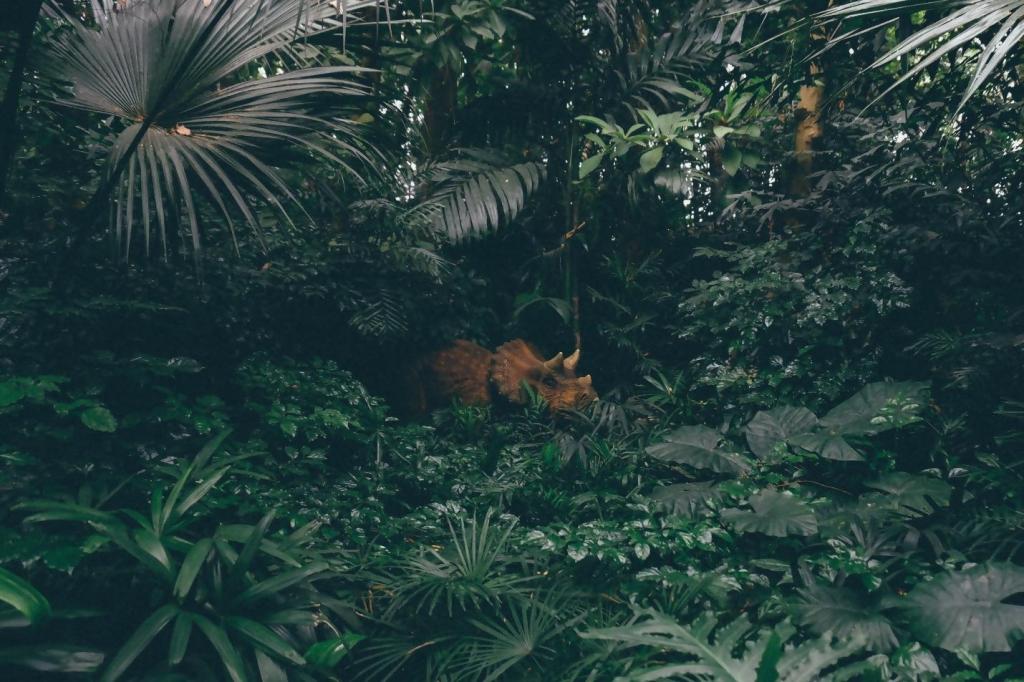
Facts About The Jurassic Period
The Jurassic period was the time from 199.6 million years ago until 145 million years ago. It fell between the Triassic period and the Cretaceous period.
During this time the world looked different from how it looks today. The continents that we know didn’t exist. Instead, there was a supercontinent, known as Pangaea. During the Jurassic period, it split apart and began to form the land masses that we know today. The northern part would later become North America, Europe, and Asia as we know them today. The southern part would form into Australia and India, and the western part would become Africa and South America. You can also check out this interesting article that talks about the random facts of the day besides the Jurassic Period.
It was this breaking up of the supercontinent, along with a generally warmer climate, that would allow reptiles to become the dominant species in the form of dinosaurs.
Plants
Prior to the Jurassic period, plant life was mostly in the form of mosses and fungus. These were simple life forms that lacked any kind of vascular system to move water around within their structure. These were mainly confined to swampy areas or places that had a lot of moisture.
By the early Jurassic period. plants had evolved into ferns and other non-flowering plants. These had a vascular system along with a root system. These types of plants reproduced by throwing out spores.
Later, during the Jurassic period, conifers evolved that bore cones for reproduction. At this time, spreading pollen by wind-distribution became a common trait of many plants. This allowed for greater diversity and population of these plants.
There were no flowering plants during this part of the world’s history, they came much later.
Dinosaurs
Reptiles were the dominant species during the Jurassic period. They had overcome the problems of reproduction and support that caused the first amphibians to struggle.

Dinosaurs could lay eggs that would ensure their offspring was nourished and moist during their gestation period. Because of this, dinosaurs became the first animals that were entirely land-based.
Dinosaurs also had hard bones. Unlike fish or amphibians, who had softer bones, the dinosaurs had skeletons that could support their weight on land. Their skeletons enabled them to develop advanced musculature for locomotion on land.
The dinosaurs were the largest land animals to have ever lived. Some of them, like the Brachiosaurus, reached lengths of 100 feet from nose to tail, and they could weigh over 100 tons. These dinosaurs were known as sauropods and were defined as having lizard hips.
The largest dinosaurs were herbivores, eating only plants, and walked on four legs. This group had small brains, but in spite of this, they were a very successful genera of dinosaur. They were able to spread out over a wide geographical area.
With such large herbivores roaming around, it is only natural that meat-eating dinosaurs evolved to hunt them. One of the most common was the Allosaurus. This dinosaur is similar in many ways to the Tyrannosaurus Rex that would evolve later.
The Allosaurus was a bit smaller than a T-Rex and had a longer jaw and heavier limbs. While they were clearly meat-eaters, It is unlikely that they would attack a large herbivore directly. Most likely, they preyed on the old and the sick among dinosaurs. They probably mixed hunting with scavenging for food, as no meat-eating dinosaur would overlook a dead carcass that it came across.
Allosaurus had strong legs but it is unknown how fast they were. Scientists suspect that they would ambush prey, rather than running it down. Ambushing requires far less energy expenditure than chasing after prey.
Dinosaurs have become extremely popular in modern media. Many people would love to meet one. The closest you can come nowadays is the type of realistic dinosaur costume that you can get from OnlyDinosaurs. These have the look and feel of genuine, living dinosaurs and are very popular.
Mammals
Reptiles were not the only animals present in the Jurassic period. Small mammals had evolved in the Triassic period and carried over into the Jurassic period.

These were mainly small mouse-sized creatures. The different species among them lived on plants or insects. It is unclear when mammals first evolved, but recent discoveries in China show that they may have evolved much earlier than was previously thought.
Marine animals
There were also a wide variety of marine animals during the Jurassic period. The largest carnivore in the ocean at this time was the Plesiosaur. These had large bodies and long necks, along with four flippers.
A more fish-shaped reptile was the Ichthyosaurus. This was the most common marine animal in the Jurassic period. These were probably the first animals to have internal gestation and bear live young, as opposed to laying eggs. Scientists have found fossil remains of Ichthyosaurus that had smaller individuals inside, which led them to the conclusion about internal gestation.
At this time there were also many squid-like animals, known as Cephalopods. Competing with these were many shark-like species that were the ancestors of modern sharks. There were also various types of rays in the ocean, which are related to sharks and modern sting-rays.
One of the most common fossils of marine life to be found is the Ammonite. These are mollusks that had a spiral-shaped shell.
Birds
The earliest known bird is the Archaeopteryx. It evolved during the Jurassic period and most likely came from a coelurosaurian such as a raptor. These birds were unlikely to have flown very well compared to birds we know today. It is suspected that they would glide close to the ground over short distances.

There were also flying reptiles at this time, the pterosaurs, who had evolved during the Triassic period. The pterosaurs eventually became extinct along with the dinosaurs at the end of the Cretaceous period.
Only the avian dinosaurs were the ultimate survivors. Many of the birds we know today are direct descendants of these ancient dinosaurs. Many scientists believe that birds are modern dinosaurs. Think about that the next time you look at a group of pigeons sitting on a roof.




